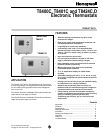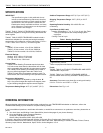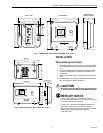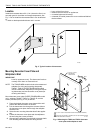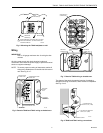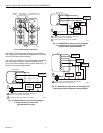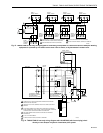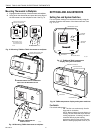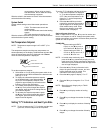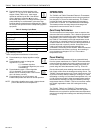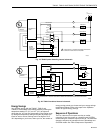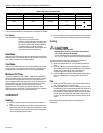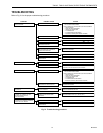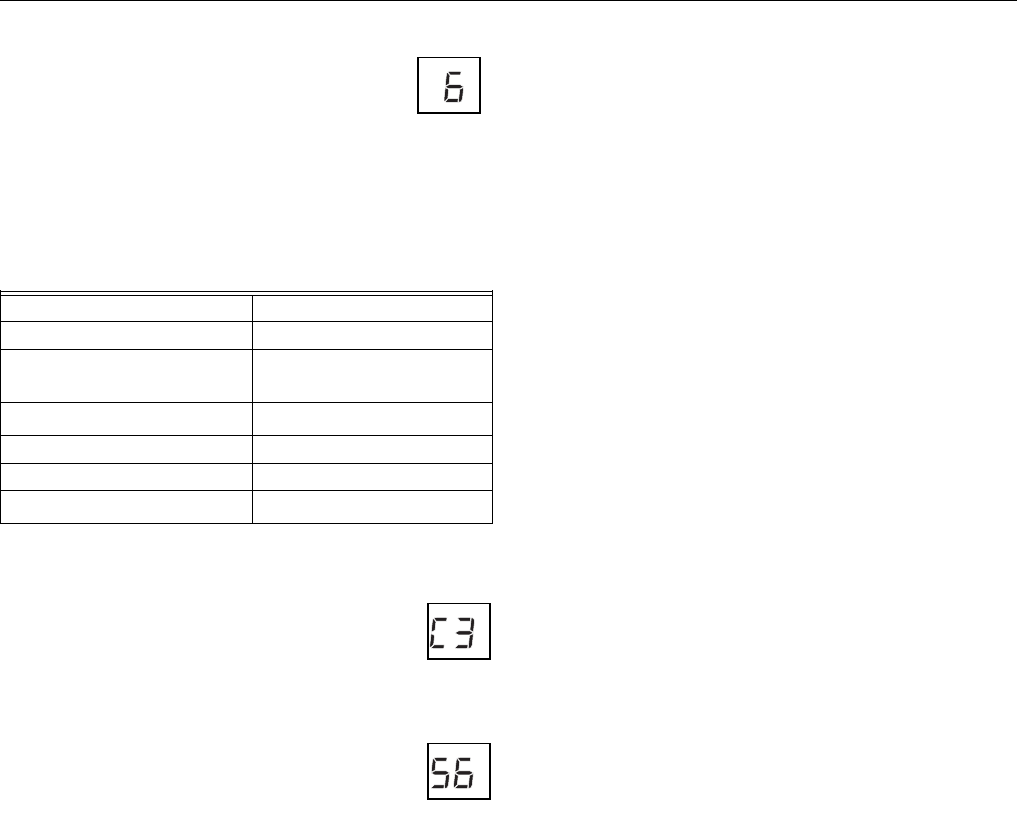
T8400C, T8401C AND T8424C,D ELECTRONIC THERMOSTATS
68-0180-3 10
10. Press the ▲ key to display the heat cycle
rate of 1, 3, 4, 5, 6, 9 or 12. When set at two
stages of heat (T8024 only) , both stages
operate at selected cycle rate. If the desired
cycle is displayed, press the ▲ key to exit
the installer setup mode. To change the heat cycle rate,
press the ▼ key to scroll between cycle rates. Stop
scrolling when the desired rate is displayed. See Table 2
for the cycle rate options and the corresponding system
equipment.
Table 2. Heating Cycle Rates.
a
High efficiency furnace.
b
Refer to equipment manufacturer’s instructions.
11. Press the ▲ key to display algorithm configu-
ration.
12. Press the ▲ key again to change the
algorithm to C1 or C3.
C1 = standard algorithm.
C3 = aggressive algorithm (can cause
overshooting).
13. Press the ▲ key again. Current algorithm
(CC) is displayed. A typical example is
shown, but CC varies by model. This informa-
tion is for factory use only.
14. Press the ▲ key to save all changes, exit
installer setup mode and return to normal operation.
NOTE: After exiting installer setup mode, change the set-
point to the desired room temperature.
OPERATION
The T8400C and T8401C Standard Electronic Thermostats
provide single-stage temperature control using proportional
plus integral (P+I) control to eliminate droop. The T8424C
provides two-stage heat and two-stage cool temperature
control with P+I control. The T8424D Electronic Multistage
Thermostat provides two-stage heat and two-stage cool
temperature control and also uses P+I control.
Zero Droop Performance
The thermostats control temperature closer to setpoint than
electromechanical thermostats. This is because proportional
plus integral control maintains the same indoor temperature
independent of the outdoor temperature. Thus the T8400C
and T8401C Thermostats provide tight temperature control
with virtually no noticeable swings in temperature setpoint, a
condition referred to as droop. This zero droop performance
provides improved occupancy comfort. Occupants do not
need to continually adjust thermostat settings to be
comfortable, even during severe weather. Electromechanical
thermostats have little control over droop, thus resulting in
room temperature changes of 3°F to 5°F as outdoor
temperature varies.
Power Stealing
Unlike hard wired thermostats which are powered directly
from the system transformer, the T8400C Thermostat steals
power through the heating and cooling system controls and
can be used in applications where existing wiring does not
permit using hard wired thermostats. See Fig. 19 and 20.
Previous Honeywell power stealing thermostats required 80
mA of load current when the heating and cooling was on. The
T8400C Thermostat requires only 2.5 mA of load current (1/32
of previous models) when the heating or cooling is on. When
the heating or cooling is off, the thermostat operates at 0.1 mA
(1/100 of previous models). Other Honeywell power stealing
thermostats are available, but they have different powering
requirements than the T8400C. This low current draw makes
the T8400C applicable to most 24V heating and cooling
systems.
The T8400C, T8401C and T8424C,D Thermostats only
operate when mounted on the wallplate with 24V applied.
Batteries are not required for operation because temperature
setpoints and configuration settings are retained permanently
in memory.
System Cycles Per Hour
Steam, gravity 1
Hydronic heat, condensing
gas furnaces
a
3
Special applications
b
4, 5
Gas or oil forced air (default) 6
Electric heat 9
Special applications
b
12
M20230
M18419
M18420



